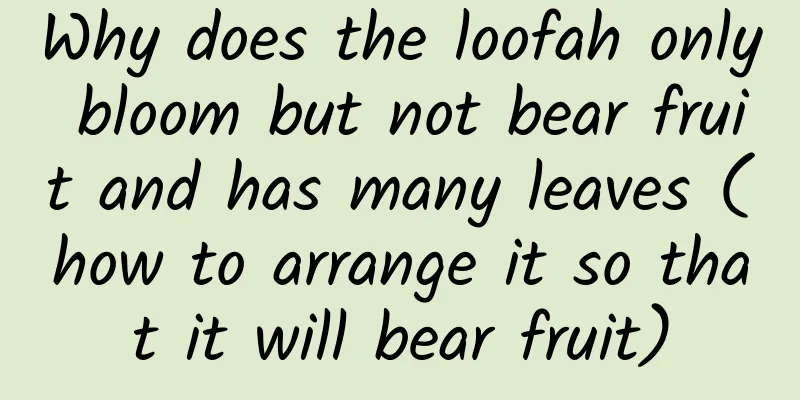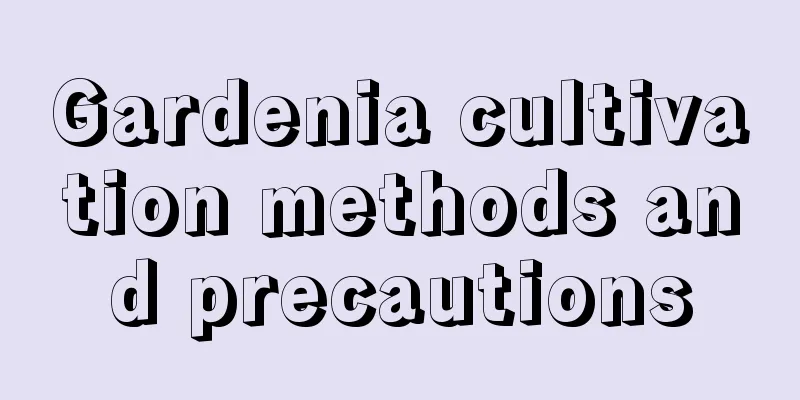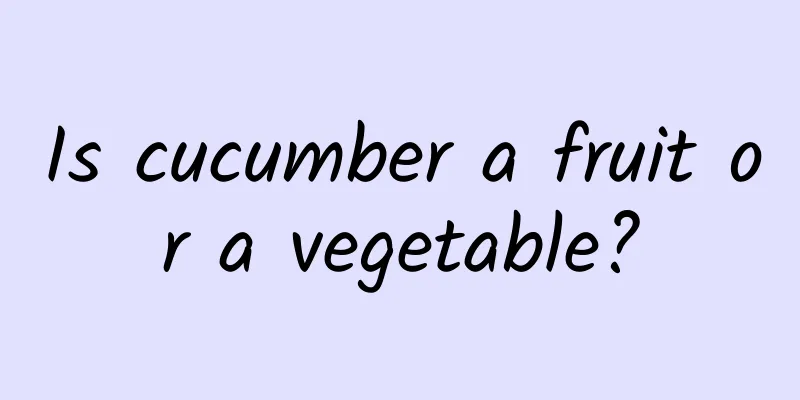Why does the loofah only bloom but not bear fruit and has many leaves (how to arrange it so that it will bear fruit)

|
Now is the time when all kinds of vegetables are growing wildly, especially when there is enough rain, many vegetables are growing too tall, and loofah is no exception. Many friends have found that the loofahs they grow in their vegetable gardens only grow vines but do not bear fruit. Some people think that this is because the fruit-bearing season has not yet arrived and that they will only bear fruit after the beginning of autumn. Is this really the case? In fact, the key to high yield of loofah lies in pruning, that is, balancing the vegetative growth and reproductive growth, so that the seedlings grow first and then the melons grow, and the timing of seedling growth and melon formation is appropriate. Here I will introduce to you the cultivation of loofah seedlings and pruning during the fruiting period: 1. Seedling growth: use more base fertilizer and make good use of organic fertilizerLuffa is a fertilizer-loving plant. It needs a lot of fertilizer during the seedling stage, and both water and fertilizer must be kept up. Therefore, it is necessary to increase the base fertilizer during cultivation. In addition to using farmyard manure and compound fertilizer when deep plowing the land, farmyard manure should also be used when the loofah vines are growing. Dig holes at the roots of the loofah and add farmyard manure. This is to provide base fertilizer for the seedling stage to ensure the nutrient needs of the seedlings. The specific operation is to apply nitrogen fertilizer and urea once every week during the seedling stage. After the female flowers bloom, you can dig holes and apply appropriate amounts of organic fertilizer. 2. Pruning and fertilizing during the fruit-bearing period. Pruning is the key, and prevention is mainly based on phosphorus and potassium fertilizers.1. Sort out the relationship, distinguish the primary from the secondary, and correctly organize the primary and secondary branches We start to organize the loofah vines from the main vine. When operating, we must start from the ground part of the loofah main vine and sort out the main vine first. Then clean up the part of the main vine below 1.5 meters, remove all the side branches growing from this part of the main vine, and also cut off the old yellow leaves at the roots, as they are no longer needed for photosynthesis. This can prevent excessive side branches and root ventilation, and effectively prevent the occurrence of diseases and insect pests. Then, the part above 1.5 meters of the main vine can be trimmed. The side branches of this section can be retained to lay the foundation for the future growth of the main and side branches. 2. Treatment of side branches: The side branches do not need to be pruned, and they will directly bear fruit The main function of the side branches of loofah is to carry out fruit growth. During the entire fruit-bearing stage of loofah, the fruit production of the main vine alone is very low, and a large number of side branches are needed to produce fruit. It can be said that the fruits of loofah are concentrated in the side branches. It is key to keep the side branches healthy, which requires leaving enough space for the side branches when pruning. 3. The final stage of loofah pruning: pinching and topping, both the main vine and the side branches need to be The loofah grows without limit. No matter the main vine or the side branches, it will continue to grow as long as they are not pinched or topped. The purpose of growing loofah is to produce high yields, so pinching and topping at the right time is particularly important. During the specific operation, we must first determine the length of the main vine, which is generally recommended to be 2-3 meters, and the number of vine side branches should be 7-8. Secondly, the length of the side branches should be kept at about 1.5 meters, which is enough to retain three layers of melons. Then the main vine and side branches can be pinched and topped. Therefore, when pruning the side branches, we need to leave 3-4 strong vines, and then top the 4th-5th vine by pinching off its head. Then fix the number of melon sprouts. Do not keep the melon sprouts on the cut side branches. Also cut off the flowers next to them to allow its leaves to grow. This is also for the needs of photosynthesis. For pruning the small loofahs that remain, you can cut off the small branches near the small loofahs and the extra flowers. Use the same method to prune all the loofahs that remain on the side branches. This will allow nutrients to be concentrated on the small loofahs. If these small branches are left, they will compete with the small loofahs for nutrients, causing the fruits to fall. 4. Fertilization during the loofah fruiting period: wood ash + foliar fertilizer During the fruiting period, both the vines and the melons of loofah require a lot of nutrients, and a single ground fertilizer is far from enough. If you don't increase the amount of fertilizer during this period, the melons may be small or deformed, and the appearance will be worse. We can use a combination of ground fertilizer and underground fertilizer, increase the supply of phosphorus and potassium fertilizers, and stop using nitrogen fertilizers. The specific operation is : spread wood ash on the ground to supplement potassium fertilizer, and spray potassium dihydrogen phosphate as foliar fertilizer at the same time. In places where conditions permit, you can mix it with the plant growth regulator brassinolide, and the effect will be more obvious. If you want to grow loofah with high yield, pruning is a key part of management. In addition to taking care of normal growth, you need to achieve a balance between vegetative growth and reproductive growth. We also need to make good pruning plans to ensure that nutrients are used where they are needed most, without wasting fertilizer, to achieve high yields, and to produce loofahs that are thick, green and straight, yielding a good harvest. |
>>: What is the role of fruit bagging (the benefits of fruit on the tree needing net bags)
Recommend
When is the best time to sow sunflower seeds?
Sunflower seed sowing time Sunflower seeds, which...
What kind of soil is suitable for planting Clivia
Clivia soil Clivia generally prefers slightly aci...
How to grow asparagus fern in winter
Keep warm Asparagus fern is native to southern Af...
How to make bonsai of Bauhinia
Material selection Generally, for bonsai plants, ...
Grafting method of red flower
Bud grafting of red flower successor Stock treatm...
Cultivation methods and precautions of Linaloa
1. Watering The spring and autumn are the seasons...
How to propagate juniper
1. Preparation of the Seedbed The seedbed for bre...
Which month is the best to plant green beans?
Dry-fried green beans are popular for their uniqu...
Why do the leaves of green apple arrowroot turn yellow?
1. Insufficient light Reason: During the growth p...
How to breed Long Xue Lan
1. Layering operation It is usually propagated by...
Is baby's breath suitable as a gift for a girlfriend?
1. Very suitable It is more suitable to be given ...
Onion growth environment conditions and characteristics
Onion growth environment conditions and requireme...
Does boxwood like water? Is it a water-loving plant?
Does boxwood like water? Boxwood prefers water. I...
How to prune bougainvillea (pruning method diagram)
1. Pruning time Bougainvillea is usually pruned i...
Difference Between Plantain and Banana
Appearance Difference The first thing to distingu...









